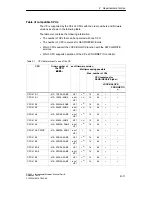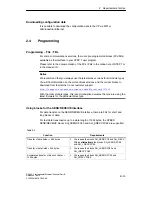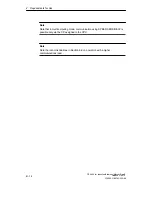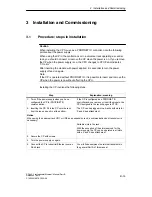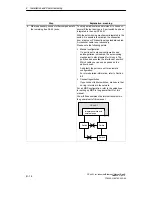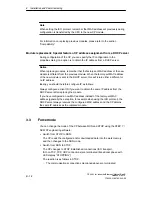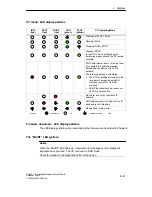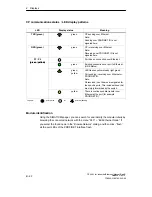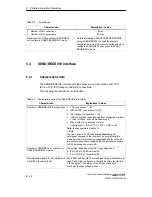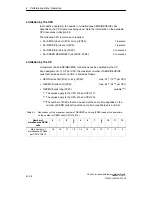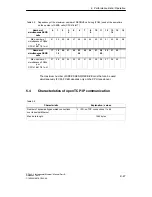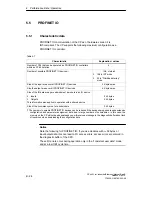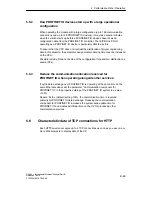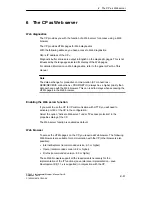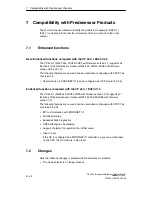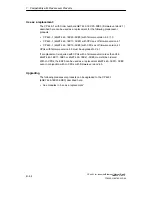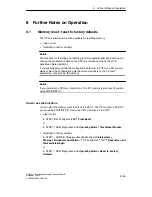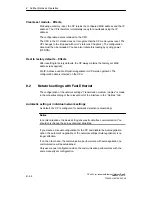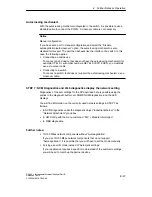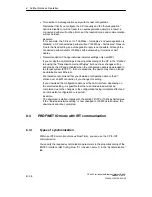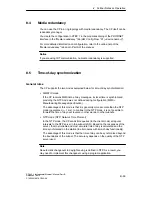
5 Performance Data / Operation
B
−
25
CP 443-1 for Industrial Ethernet / Manual Part B
Release 07/2010
C79000-G8976-C223
−
06
Table 5-3
Characteristic data of the SEND/RECEIVE interface, Fortsetzung
Characteristic
Explanation / values
Maximum data length for AG_LSEND
and AG_LRECV blocks
AG_LSEND and AG_LRECV allow the transfer of data fields
with the following lengths:
1. ISO-on-TCP, TCP, ISO Transport: 1 to 8192 bytes
2. UDP: 1 to 2048 bytes
Maximum data length for AG_SSEND
and AG_SRECV blocks
AG_SSEND and AG_SRECV allow the transfer of data fields
with the following lengths:
1. ISO-on-TCP, TCP, ISO Transport: 1 to 1452 bytes
2. UDP: 1 to 1452 bytes
Restrictions for UDP
S
Transfer is not confirmed
The transmission of UDP frames is unconfirmed, in other
words the loss of messages is not detected or displayed by
the send blocks (AG_SEND or AG_LSEND).
S
No reception of UDP broadcast
To avoid overload due to high broadcast load, the CP does
not allow reception of UDP broadcasts.
As an alternative, use the multicast function over a UDP
connection. This allows you to register the CP as a node in a
multicast group.
S
UDP frame buffering
Length of the frame buffer with buffering enabled:
2 KB
Note:
Following a buffer overflow, newly arriving frames are
discarded.
LAN interface - max. data field length
generated by CP per protocol data unit
S
sending
ISO transport, ISO-on-TCP, TCP:
−
400 bytes / TPDU with AG_SEND / AG_LSEND
−
1452 bytes / TPDU with AG_SSEND
S
receiving
−
ISO transport: 512 bytes / TPDU
−
ISO-on-TCP: 1452 bytes / TPDU
−
TCP: 1452 bytes / TPDU
5.3.2
Number of simultaneous SEND/RECEIVE calls
The number of SEND/RECEIVE calls that can be used at the same time is limited
both by the CPU and by the CP.
If the maximum number of simultaneous SEND/RECEIVE calls is exceeded, the
value 8302
H
(no receive resources) is indicated in the STATUS of the surplus
SEND functions. This can, for example, happen when too many SEND/RECEIVE
calls are sent at the same time in OB1.

